This article was medically reviewed by Jennifer Boidy, RN. Jennifer Boidy is a Registered Nurse in Maryland. She received her Associate of Science in Nursing from Carroll Community College in 2012.
There are 13 references cited in this article, which can be found at the bottom of the page.
wikiHow marks an article as reader-approved once it receives enough positive feedback. This article received 18 testimonials and 93% of readers who voted found it helpful, earning it our reader-approved status.
This article has been viewed 550,149 times.
There are at least 1,500 scorpion species, and only 25 of them produce a venom that causes serious harm to adult humans.[1] However, any scorpion sting has the potential to cause an allergic reaction, which can be dangerous in its own right. Even if you have identified the species and know it is harmless, treat the wound and be prepared to call emergency services if you feel any symptoms besides pain and slight swelling.
Steps
Seeking Medical Assistance
-
1Call Emergency Services if necessary. If the victim is experiencing any symptoms besides pain and slight swelling, call emergency services. Also, call if you believe the scorpion is dangerous (see identification section), or if the victim is a child, or if the victim is a child, elderly person, or someone with a weak heart or lungs. Some of these serious, systemic symptoms include muscle spasms, dizziness, nausea, vomiting, and allergic reaction, and may also include those symptoms experienced with snake bites.[2]
- Find an online ambulance number listing to learn the emergency number for other countries.
-
2Call the poison center for advice. If you are not in need of immediate medical attention, call a poison control center to report your symptoms and request expert advice. If your region's poison control center is not listed below, search for your region's name and "poison control" online. If you cannot find one, call one of the following numbers long-distance, choosing one in a location as near as possible to you.
- In the USA, phone Poison Help at 1-800-222-1222, or search this database for a poison center nearer to you.
- Outside of the USA, locate a poison control center using the World Health Organization's database.
Advertisement -
3Describe the victim over the telephone. The victim's approximate age and weight are useful for medical personnel to help them evaluate the risk and recommend treatment.[3] If the victim has any allergies or medical conditions especially to insect bites or medicines, let the emergency services or poison center know.
- Also communicate the exact time the victim was stung if possible. If you're not sure, say so and mention when the injury was noticed.
-
4Describe the scorpion to the medical assistance over the telephone. An emergency response service may not be able to advise you over the phone, but a poison control center should ask you for a detailed description of the scorpion. See the section on identifying scorpions for advice on danger signs and how to capture the scorpion if it is still around.
-
5Find someone to monitor the victim and take them to a hospital if necessary. Because scorpion venom can produce involuntary muscle motion, the victim may not be able to drive or walk if dangerous symptoms develop. Find someone with a car or other transportation that can take the victim to a hospital in case they cannot reach an emergency ambulance service. The victim should not be left alone for at least 24 hours, and preferably monitored for the next week in case symptoms worsen.[4]
Treating the Sting at Home
-
1Seek medical attention for serious symptoms. No matter what, children, infants, the elderly, and people with a damaged heart or lung should always seek medical attention for a scorpion sting. Still, most scorpion stings can be treated at home, although the most dangerous venom requires professional medical attention. Seek medical attention immediately if you see any of the following symptoms.[5]
- Vomiting, sweating, drooling, or foaming at the mouth
- Involuntary urination or excretion (peeing or pooing)
- Thrashing or twitching muscles, including involuntary head, neck, or eye movements, or difficulty walking
- Accelerated or irregular heart rate
- Difficulty breathing, swallowing, speaking, or seeing
- Severe swelling from an allergic reaction
-
2Find the sting location. A scorpion sting may or may not swell noticeably. Any scorpion sting, however, will cause a sharp pain or burning sensation at the time of injury, followed by tingling or numbness. Sting areas generally are near lower portions of the body but may include the rest of the body.
-
3Wash the sting area with soap and water. Gently remove any clothing from around the area and wash gently. This helps remove any residual venom around the area and keeps the wound clear to reduce risk of infection.
-
4Keep the injury area still and below heart level. Unlike some injuries, scorpion sting wounds should never be raised above the heart, as this can cause the venom to spread more quickly through your system. Keep the affected area at heart level or lower, and minimize the victim's movement to prevent a faster heart rate that will spread the venom more quickly[6]
-
5Calm the victim. Anxiety or excitement can cause a faster heart rate, which will increase the rate that venom is absorbed. Reassure the victim if possible, and prevent him from moving. Remind them that the majority of scorpion stings result in no permanent damage.
-
6Apply a cold pack or ice to the sting area.[7] The cold helps slow the spread of venom, reduce swelling, and numb the pain. Apply the cold pack or bag of ice for ten to fifteen minutes at a time, waiting an equal amount of time between applications. This treatment is most effective within two hours of the time of injury.[7]
- If the victim has circulatory problems, apply ice for five minutes at a time instead to prevent damage.[8]
-
7Take nonprescription painkillers to reduce pain. Use ibuprofen, aspirin, or acetaminophen to relieve discomfort and pain. Always follow the directions on the label. Do not use opiate painkillers (narcotics), as these can suppress breathing. Ibuprofen and aspirin are best as they are both NSAIDs, or Nonsteroidal Anti-Inflammatory Drugs that will help to reduce swelling. [9] If pain is intense, seek medical attention.
-
8Provide first aid if necessary. Unconsciousness or severe spasms are rare, but if they occur, call an ambulance immediately. Learn the basic steps of CPR and use them on the patient immediately if you have any suspicion her heart has stopped.
-
9Check in with a doctor. Even if you feel that you've recovered through self-treatment, it is highly advisable to see a doctor or medical professional. In order to reduce the risk of infection and other complications, you may be advised to get a tetanus shot, take muscle relaxants, or use antibiotics. Do not give yourself these medicines without a doctor's advice.
Identifying the Scorpion
-
1Capture the scorpion only if you can do so safely. You should prioritize getting help for the victim over catching the scorpion. However, identifying the scorpion species allows you to determine whether treatment is necessary, and in the case of venomous species, will allow medical professionals to give you the correct treatment.[10] If you have a glass jar much larger than the scorpion (a quart or liter size is usually suitable), attempting to capture it will give an expert the greatest chance of identification.[11] [12] However, if you cannot see the scorpion, or do not have an appropriate container, do not attempt this step.
- Find a large glass jar, easily large enough to cover the scorpion and tall enough that your hands will be well out of reach of the stinger when you hold it upside-down. If you have them, find a pair of tongs that are at least 10 inches (25 cm) long.
- Capture the scorpion with the jar or tongs. Hold the jar upside-down and place fully over the scorpion. If you have tongs long enough to use them while staying out of reach, use them to firmly grasp the scorpion and place it into the jar instead.
- Fasten the lid. If the jar is upside-down, slide a large piece of heavy construction paper or cardboard under the opening, then hold it from the outside as you flip the container upside-down. Attach a tight lid or place a large, heavy book over the opening.
-
2Photograph the scorpion if you cannot capture it. If you do not have the correct tools for capturing the scorpion, photograph it instead. Take several photographs from different angles if possible. Having images to refer to will help you find details you may not remember, and if you need to seek expert attention, will help a medical professional identify the species for you.
-
3Assume that a fat-tailed scorpion may be dangerous. Scorpions with thick, fat stingers and tails are often more dangerous than scorpions with thin stingers. While it is still useful to capture or photograph the scorpion for specific species identification, you should seek medical attention even if you have not yet experienced serious symptoms, especially if you are in Africa, India, or the Americas.
- If you only got a good view of the pincers, you can estimate your risk from them as well: large, powerful pincers often indicate the scorpion relies on them for defense more than venom. This is not a foolproof system, but may be valuable information to pass on to a medical professional.
-
4Identify dangerous scorpions in the United States and northern Mexico. If you are in the southwestern United States or northern Mexico, look for images of the "Arizona bark scorpion" online and compare them to the scorpion that caused the injury. Note that bark scorpions at high elevations tend to be striped, while desert dwelling bark scorpions are usually a uniform tan or light brown. The stings of these scorpions can be fatal and require immediate medical attention.[13]
- If you are elsewhere in the United States, there is low risk of serious injury from scorpion stings.[14] You should still treat the injury site as described below, and be prepared to see a doctor if you experience allergic reactions or other serious symptoms.
-
5Identify dangerous scorpions in the Middle East and Africa. The "deathstalker scorpion", also known as the Israeli desert scorpion, grows to a maximum of 4.5 inches (11.5 cm) and can vary widely in color and pincer size.[15] Because of the risk of heart or lung failure associated with their stings, any sting from a scorpion smaller than an adult's hand encountered in this region should be treated by medical professionals as soon as possible.
- As noted earlier, fat-tailed scorpions can be extremely dangerous as well, and many species are found in this region.
- Unidentified, thin-tailed species are typically low risk, but due to the large number of scorpion species in Africa, not all of which have been thoroughly studied, be prepared to seek medical attention if any symptoms besides pain and slight swelling develop.
-
6Identify dangerous scorpions in Central and South America. Most scorpions in this area are not dangerous to adults, but there are exceptions. One of the more dangerous is the "Brazilian yellow scorpion;" as with many dangerous scorpions, it tends to have a thick, fat tail.[16]
-
7Identify dangerous species in other areas. The are few remaining scorpion species that can cause fatality or serious injury in adult humans, but as not all species have been identified, it is always a good idea to seek medical attention if the victim experiences any symptoms besides pain and mild swelling around the injury site.
- Stings from small, red or orange scorpions in India, Nepal, or Pakistan should be treated with medical attention immediately.[17] These may be Indian red scorpions.
- There is low risk of death or serious injury for an adult due to scorpion venom from Europe, Australia, or New Zealand. Identification is still a good idea in case you do experience severe symptoms and need to report them to a medical worker.
Expert Q&A
-
QuestionCan anything be done if the area where I got stung is numb after a few weeks?
 Jennifer Boidy, RNJennifer Boidy is a Registered Nurse in Maryland. She received her Associate of Science in Nursing from Carroll Community College in 2012.
Jennifer Boidy, RNJennifer Boidy is a Registered Nurse in Maryland. She received her Associate of Science in Nursing from Carroll Community College in 2012.
Registered Nurse If the area where you got stung is still numb after a few weeks, you should call your doctor to be evaluated.
If the area where you got stung is still numb after a few weeks, you should call your doctor to be evaluated. -
QuestionCan a scorpion bite damage the kidneys?
 Jennifer Boidy, RNJennifer Boidy is a Registered Nurse in Maryland. She received her Associate of Science in Nursing from Carroll Community College in 2012.
Jennifer Boidy, RNJennifer Boidy is a Registered Nurse in Maryland. She received her Associate of Science in Nursing from Carroll Community College in 2012.
Registered Nurse Yes. While very rare, the venom from a scorpion sting can cause kidney damage, including acute renal (kidney) failure.
Yes. While very rare, the venom from a scorpion sting can cause kidney damage, including acute renal (kidney) failure.
Warnings
- Do not cut the injury site, as this can cause dangerous bleeding or infection and will not remove the venom from your bloodstream.⧼thumbs_response⧽
- Do not attempt to suck out the venom with your mouth. Medical professionals may attempt to pull it out with a suction device, but it is unclear how effective this is.[18]⧼thumbs_response⧽
References
- ↑ http://askabiologist.asu.edu/explore/not-so-scary-scorpions
- ↑ https://www.mayoclinic.org/diseases-conditions/scorpion-stings/symptoms-causes/syc-20353859
- ↑ http://www.nlm.nih.gov/medlineplus/ency/article/002850.htm
- ↑ http://www.nlm.nih.gov/medlineplus/ency/article/002850.htm
- ↑ https://www.mayoclinic.org/diseases-conditions/scorpion-stings/symptoms-causes/syc-20353859
- ↑ https://my.clevelandclinic.org/health/diseases/17860-scorpion-stings
- ↑ 7.07.1http://emedicine.medscape.com/article/168230-treatment
- ↑ http://www.nlm.nih.gov/medlineplus/ency/article/002850.htm
- ↑ http://www.mayoclinic.org/diseases-conditions/scorpion-stings/basics/definition/con-20033894
- ↑ http://emedicine.medscape.com/article/168230-treatment
- ↑ http://www.ipm.ucdavis.edu/PMG/PESTNOTES/pn74110.html
- ↑ http://kidshealth.org/kid/ill_injure/bugs/scorpion.html
- ↑ https://www.tripsavvy.com/types-of-arizona-scorpions-2683030
- ↑ http://www.netdoctor.co.uk/travel/diseases/scorpions_and_spiders.htm
- ↑ http://www.scorpionworlds.com/deathstalker-scorpion/
- ↑ https://www.planetdeadly.com/animals/worlds-dangerous-scorpions
- ↑ http://www.ncbi.nlm.nih.gov/pubmed/1359678
- ↑ http://emedicine.medscape.com/article/168230-treatment
About This Article
Before you treat a scorpion sting, call emergency services if you’re experiencing any symptoms besides pain and slight swelling, or if you have a weak heart or lungs, since this may make you more susceptible to a sting. If your symptoms are mild, you can call the poison control center instead at 1-800-222-1222 for advice. To treat the sting, first wash the area with soap and water to rinse off any residual venom. Then, apply a cold pack for 15 minutes at a time to reduce pain and swelling. While treating the sting, make sure to keep the injured area still and below heart-level to slow the spread of venom through your body. To learn how to identify poisonous scorpions, read more from our Medical co-author.



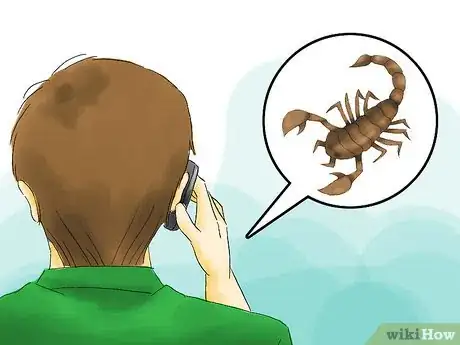



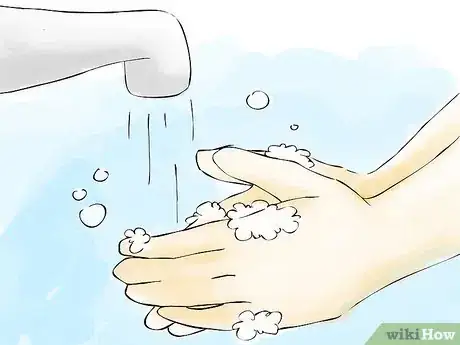



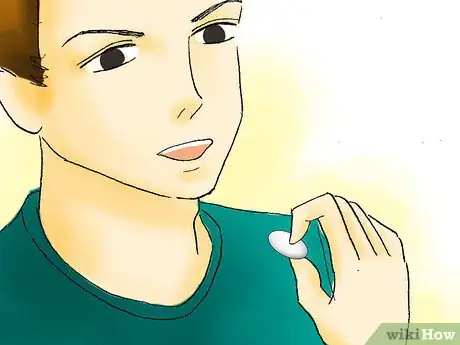

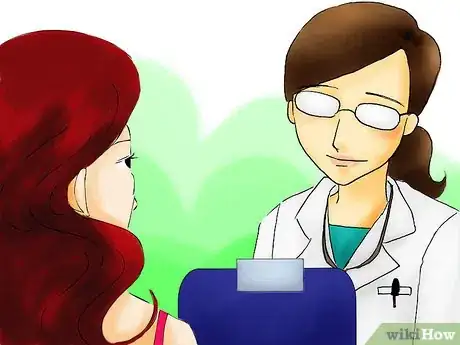




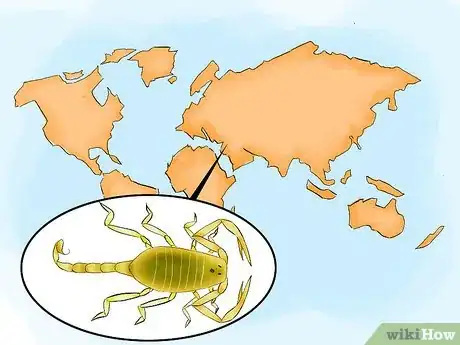
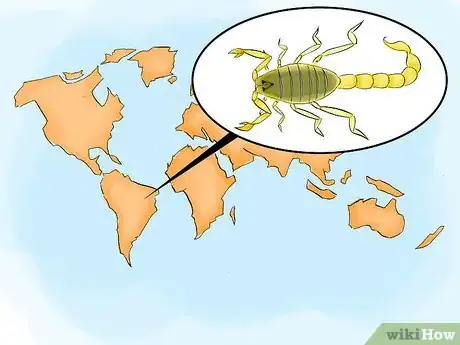
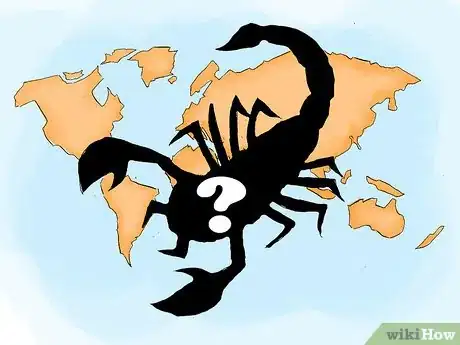

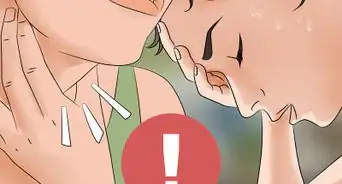
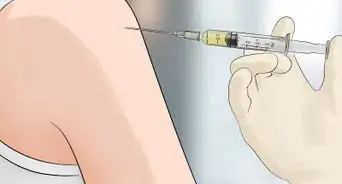

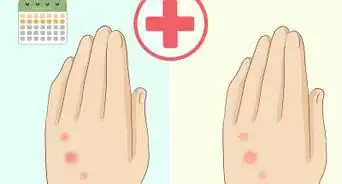

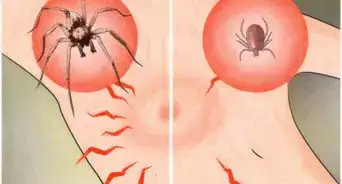
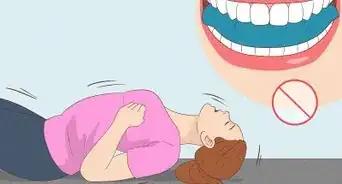


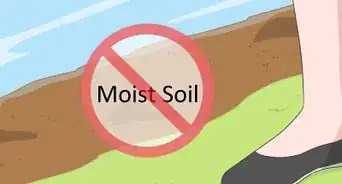

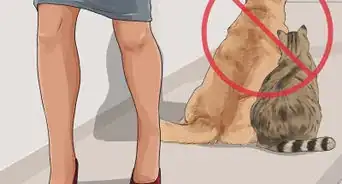
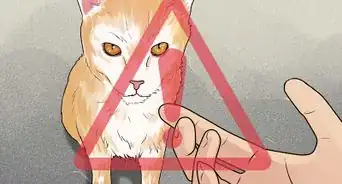










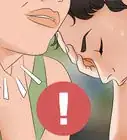





































Medical Disclaimer
The content of this article is not intended to be a substitute for professional medical advice, examination, diagnosis, or treatment. You should always contact your doctor or other qualified healthcare professional before starting, changing, or stopping any kind of health treatment.
Read More...